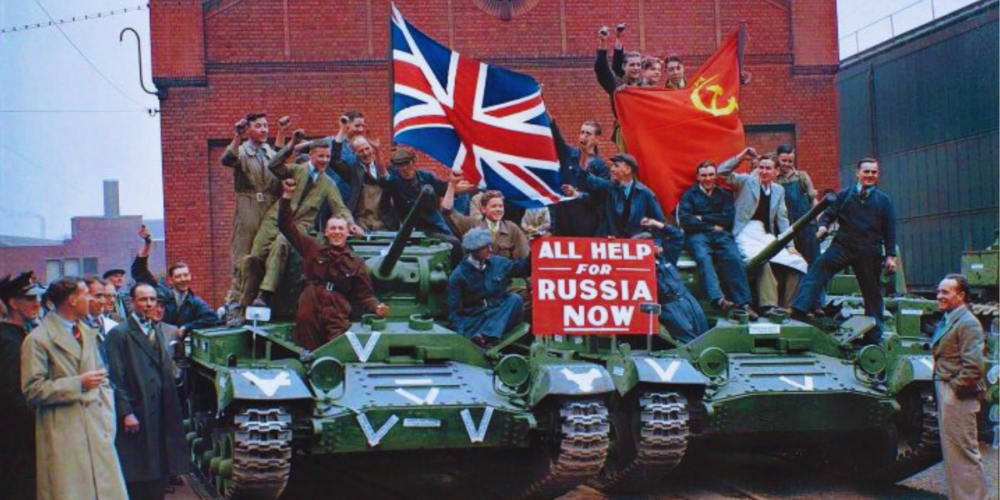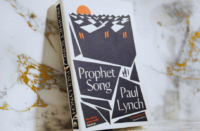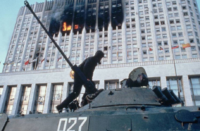Illustrated with an interesting and refreshing selection of photographs, posters, paintings and newspaper clippings, John Ellison’s new book “World War Two A People’s War?” puts a long and complex story of World War Two into a brief and accessible narrative. Coming from the British perspective on the war and dominantly leaning onto British historical writing, Ellison’s writing covers the timespan from the mid thirties to the late forties, setting the stage for the war, and cleaning the stage up after its horrors.
The premise of the book is contained in the question the title poses, or in its expanded version, “[H]ow much was the war fought for the interests of the ruling elites of the Western Allied Powers against the expansionist ambitions of Nazi Germany, Mussolini’s Italy, and militarist Japan; and how much of it was fought for the benefit of the mass of the peoples threatened by that aggression and by the military occupations that went with it?” Ellison approaches the question from different angles, offering perspectives on Britain and other states at war. From the British perspective, he documents the attitude of the Communist Party and the Labour’s left wing on pre-war British politics towards Nazi Germany and its allies, and continues to document the transitions of these attitudes in the war times. Through this lens we get to see the class differences in experiencing the war in Britain—Blitzkrieg and rationing for the working class, and the Ritzkrieg for the aristocracy. Ellison keeps reporting on the British government opinions on the Soviet Union in pre-war and war period: both the public messaging and the internal documents available paint the picture of distrust and anti-communist sentiment. The “two wars” paradigm in which Germany and the Soviet Union are the two enemies of Britain and its interests remains a consistent thread, and it is not unique to Britain (Ellison reminds the reader of Harry Truman’s famous quote “If we see that Germany is winning we ought to help Russia and if Russia is winning we ought to help Germany and that way let them kill as many as possible”).
To provide the full timeline of the war, Ellison takes the reader across Europe and beyond, to Asia. Accounts of the situation in India and the Middle East illustrate the British imperial positions and their reinforcement during the war. In the story of the Italian, Yugoslav, and Greek front we get a quick introduction into popular uprisings, partisan fighting and communist organising in the Balkans and the Italian peninsula. Alongside these popular struggles, Ellison clearly makes the case for a distinct socialist position of the Soviet Union in the World War, incomparable to that of the Axis powers and that of the Western Allies in their respective exploitative and imperialist mechanisms. He proceeds to refute some common revisionist claims against the Soviet Union; on Stalin, Ellison’s choses to characterise him as paranoid, which opens a discussion wider than the scope of this review.
Ellison’s reliance on Western sources (and a subset of Eastern sources that made its way into English translation, often by political choice) restricts the options of writing about a People’s War in the Eastern Front at length; that would be a different book, and one worth reading in tandem with Ellison’s. Ellison does however make good use of his sources and goes beyond surface reading of politics and polemics of the time, for example in the nuances of British Communist Party’s characterisation of the war.
This book represents a refreshing read in the era of Blitz spirit jingoism, wars wrapped in diplomatic messaging of the Western powers, and distinctly different class experiences of war and crisis at home and abroad. Ellison is no Hobsbawm or Losurdo, and that is to his advantage—he can provide a first, highly accessible, anti-revisionist World War Two reading for many.






